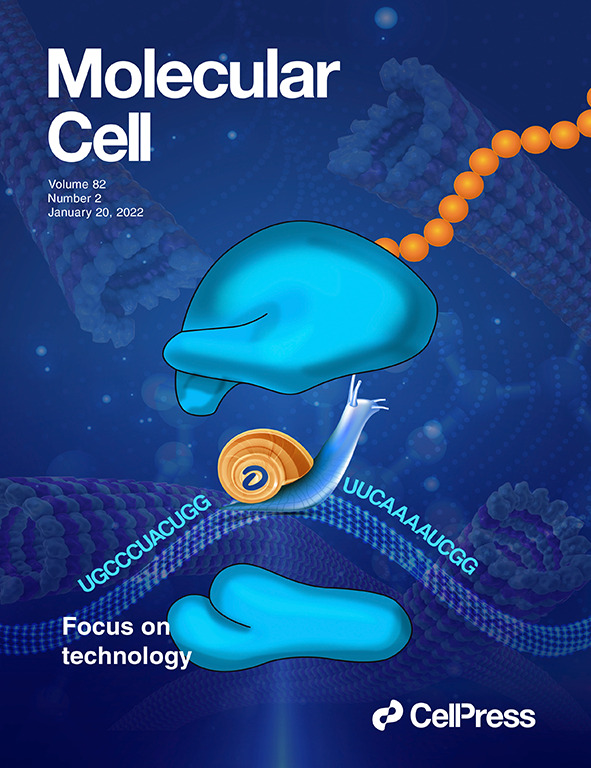Conformational flexibility of His200 enables catalytic activity in the T200H mutant of carbonic anhydrase II
IF 6.5
3区 生物学
Q2 BIOCHEMISTRY & MOLECULAR BIOLOGY
引用次数: 0
Abstract
Carbonic anhydrase II (CAII) is one of the most efficient enzymes known, catalyzing the reversible hydration of CO2 to regulate pH and facilitate CO2 transport in biological systems. Its exceptional catalytic rate depends on a highly ordered active site composed of a Zn2+ ion and a hydrogen-bonded water network that supports substrate binding, proton transfer, and product release. Among the residues maintaining this network, Thr200 plays a crucial role by stabilizing key water molecules. To investigate the structural and functional consequences of perturbing this network, we examined the T200H mutant of CAII using high-pressure cryocooling and X-ray crystallography under CO2 pressures of 0, 5, and 20 atm. The crystallographic snapshots captured the resting (T200H-0atm), substrate-bound (T200H-20atm), and product-bound (T200H-5atm) states of the T200H mutant. In the resting state, His200 disrupts the active site by displacing essential water molecules (W1 and W2), thereby impairing the proton transfer pathway. However, the substrate- and product-bound states reveal that His200 exhibits conformational flexibility, allowing partial restoration of the water network required for catalysis. These findings suggest that His200 functions as a dynamic gatekeeper, modulating access of water, substrate, and product to the active site. This structural plasticity explains how the T200H mutant retains partial catalytic activity despite a mutation that would otherwise severely hinder function. Our results provide new insights into active-site dynamics in CAII and offer a foundation for designing isoform-specific inhibitors or engineered carbonic anhydrase variants with tunable catalytic properties.
His200的构象灵活性使碳酸酐酶II的T200H突变体具有催化活性。
碳酸酐酶II (carbon anhydrase II, CAII)是目前已知效率最高的酶之一,它催化二氧化碳的可逆水合作用,调节生物系统中的pH值,促进二氧化碳的运输。其特殊的催化速率取决于由Zn2+离子和氢键水网络组成的高度有序的活性位点,该活性位点支持底物结合,质子转移和产物释放。在维持这一网络的残基中,Thr200起着稳定关键水分子的关键作用。为了研究干扰该网络的结构和功能后果,我们在0、5和20 atm的CO2压力下使用高压冷冻和x射线晶体学研究了CAII的T200H突变体。晶体学快照捕获了T200H突变体的静息(T200H-0atm)、底物结合(T200H-20atm)和产物结合(T200H-5atm)状态。在静息状态下,His200通过取代必需的水分子(W1和W2)破坏活性位点,从而损害质子转移途径。然而,底物结合态和产物结合态表明,His200具有构象灵活性,可以部分恢复催化所需的水网络。这些发现表明,His200作为一个动态看门人,调节水、底物和产物进入活性位点的途径。这种结构可塑性解释了T200H突变体如何保持部分催化活性,尽管突变会严重阻碍功能。我们的研究结果为cai活性位点动力学提供了新的见解,并为设计具有可调催化性能的异构体特异性抑制剂或工程CA变体提供了基础。
本文章由计算机程序翻译,如有差异,请以英文原文为准。
求助全文
约1分钟内获得全文
求助全文
来源期刊

Molecules and Cells
生物-生化与分子生物学
CiteScore
6.60
自引率
10.50%
发文量
83
审稿时长
2.3 months
期刊介绍:
Molecules and Cells is an international on-line open-access journal devoted to the advancement and dissemination of fundamental knowledge in molecular and cellular biology. It was launched in 1990 and ISO abbreviation is "Mol. Cells". Reports on a broad range of topics of general interest to molecular and cell biologists are published. It is published on the last day of each month by the Korean Society for Molecular and Cellular Biology.
 求助内容:
求助内容: 应助结果提醒方式:
应助结果提醒方式:


